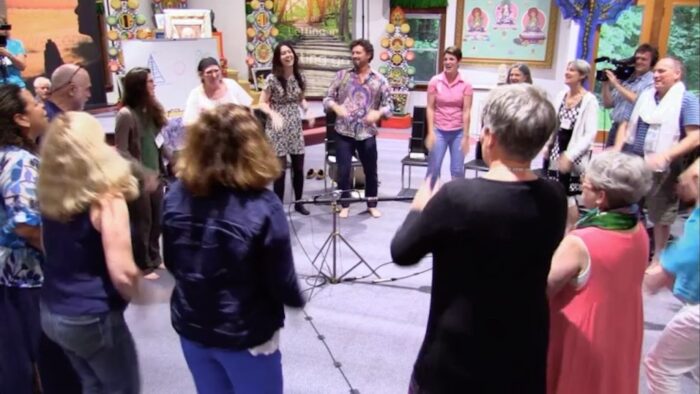BLOOMINGTON, Ind. — As local and national investment grows in dementia research and medical treatment, caregivers and advocates say another essential part of care is often overlooked: emotional connections.
Dementia affects more than memory. It impacts relationships, personal identity and daily interactions. Programs in Bloomington, including work led by Memory Bridge and implemented in facilities like Jill’s House, are part of a broader trend reframing dementia care to include emotional well-being as a core component. The center of the approach is the belief that connection does not disappear when memory fades.
Memory Bridge, founded by Michael Verde, focuses on training caregivers, students and community members to communicate without relying on solely memory-based conversations. Instead of asking fact-based questions, participants learn to connect through shared presence, tone, and even sensory experiences.

Verde said identity and communication remain accessible long after memory recall becomes difficult.
“One of the reasons we believe we are a self is because we catch glimpses, reflections, in other people’s eyes of what we feel to be ourselves” said Verde.
Research indicates that approach may have scientific grounding. A 2023 paper published in the Journal of Alzheimer’s Disease, “Emotion Processing Dysfunction in Alzheimer’s Disease,” found that positional emotional cues can still enhance connection and engagement even in later stages of dementia.
Similarly, a 2022 review in Frontiers in Dementia, “Heightened Emotion Processing as a Compensatory Mechanism,” suggests that emotional expression may play a larger role as cognitive ability declines, serving a form of adaptation communication.
A glimpse of Jill’s House offers a look at the compassionate routines and relationships that define the space. From laughter to quiet moments, these clips highlight how the residents connections continue.
At Jill’s House, a memory care facility in Bloomington, students and care partners apply similar methods. Music, routine and shared activity are integrated into their daily schedules, where emotional response is treated as a meaningful outcome.
Kade Moon, an Indiana University student who volunteers at Jill’s House, said emotional awareness is sometimes more effective than conversation.
“They may not remember exactly what you do or what you say with them, but they’ll always remember how they feel when you do things,” Moon said.
Expanding on Verde’s idea of relational identity, Moon focuses on bringing a bright, positive energy to the environment around them.
“They’re like a mirror,” said Moon.
Indiana University student volunteer Kade Moon reflects on his experience working with residents at Jill’s House. Moon shares how emotional connection shapes meaningful communication.
Like emotional connection, the environment plays a crucial role. Care partners at Jill’s House work with structured routines that include communal meals, music, group activities and opportunities for social interaction.
One care partner, Brandy, said small adjustments can lead to meaningful connection.
“I’ve been a nurse for 31 years. This is the first memory care that I’ve worked at being like a home setting,” she said. “This here is by far the best.”
The staff and facilities impact does not go unnoticed. Pam Kroskie, whose mother lives at Jill’s House, said seeing emotions reassures her that connection still exists.
“I watch her with Brandy, and she laughs just like she would with me,” Krowskie said.
That shift from memory to connection often gives families a new way to focus on what is present rather than what has been lost. The emotional focus is not a replacement for medical research, but rather, a necessary counterpart. Moon said his time working at Jill’s House has changed his perspective on not just dementia, but on everyday communication.
“That kindness lingers, even if you haven’t had experience working dementia patients,” said Moon.